UNIT 2.1
NATIONAL INCOME
Concepts of National Income
The labour and capital of a country working on the natural resources produce annually a certain amount of goods and services, the aggregate of which is known as the national income or national product. Usually National income is expressed in terms of money, therefore national income or national product is equal to the total money value of goods and services produced in the economy during the year.
There are many concepts of national income which are used by economists, all of which are interrelated. These concepts are as under.
1:- Gross National Product (GNP):
Gross national product is defined as “Total market value of all final goods and services produced in the economy during a year.”
While measuring GNP we only take the value of final products. All the intermediate goods, semi finished or unfinished goods are excluded to avoid double counting. The value of final goods itself includes the value of raw materials and other unfinished or intermediate goods used in production. For example the value of sugar includes the value of sugarcane and other materials used in the production of sugar.
2:- Gross Domestic Product (GDP):
Gross domestic product is calculated by subtracting net foreign income from GNP.
It may be defined as “Total market value of all final goods and services produced within the country during a year.”
GDP = GNP – Net Income from abroad
Gross national income refers to income of all the national resources working anywhere in the world, whereas GDP only includes income or out put of the resources working within geographic boundaries of a country, therefore GDP is a narrow concept as compared to GNP.
3:- Net National Product (NNP)
Net national product at market prices is equal to gross national product minus the allowance for depreciation and replacement.
NNP = GNP - Depreciation.
Depreciation represents the value of fixed capital consumed during the process of production or this is the expenditures on the wear and tear of capital goods. Therefore depreciation should be treated as an item of cost. Thus, the net addition to the country's final output can only be found out by deducting depreciation from the gross national product during the year.
4:- National Income (NI)
The national income is calculated by subtracting indirect taxes from NNP and adding subsidies to it.
NI = NNP - Indirect taxes + Subsidies
Indirect taxes are those taxes which are usually included in the market prices of goods and services.
Subsidies are monetary assistance given by government to firms for keeping market prices below the factor cost.
National income or national income at factor cost can also be regarded as the total income earned by all the factors of production working in the economy during one year. In this way it is equal to the sum total of the income received by factors of production during one year. It is equal to the sum of wages, interest, rent and profit in a given year. Therefore national income is also represented by following equation.
NI = Rent + Wage + Interest + Profit
5:- Personal Income (PI)
Personal income means total income actually received by people in the economy whether it is earned or not. Income which people actually receive may be different from the income they have earned. A certain part of income which people have earned may not be actually received by them.
Therefore Personal income it is calculated by subtracting all types of deductions from national income and adding all types of additions to it.
The items which are earned but not received by factors of production, such as undistributed profits, corporate taxes and social security contribution are deducted. On the other hand the items which are not a reward of current productive services of the factors of production but received by them are added, for example transfer payments like old age benefits, pensions, social security benefits etc.
PI = NI – (Undistributed profits - corporate taxes -social security contribution) + (pension
+ Unemployment allowance + other transfer payments)
6:- Personal Disposable Income (PDI)
Personal disposable income is that part of our total income which the income earners are free to spend. It is the income left with people after deducting direct taxes like income taxes etc. from the personal income of the people.
PDI = PI - Direct taxes.
Direct taxes are those taxes which people pay from their income and cannot transfer to other people.
7:- Per Capita Income (PCI)
Per capita income is the average per person income in a country. It is calculated by dividing GNP with total population.
![]()
All the seven concepts of national income are useful tools of economic analysis, each of them serving a particular purpose. These concepts can provide an accurate picture of the working of an economy.
THE CIRCULAR FLOW OF INCOME IN THE ECONOMY
In a two sector economy consisting of firms and household, the flow of income from firms to household in terms of rewards of factors of production and from household to firms in terms of expenditures on goods and services produced by firms is called circular flow of national income.
Therefore income in an economy flows between households and firms.
To explain circular flow of national income we make following assumptions
1. All factors of productions (Land, Labour, Capital and Organization) are owned by household and this sector receives income from the sale of these factors
2. Firms by employing these factors of production produce goods and services.
3. Goods and services produced by firms are purchased by household sector by spending whole income.
In this way income flows from household sector to firms and from firms to household sector.
The circular flow is explained in the following diagram.

The total sales value of goods produced (output) should equal the total expenditure on goods, assuming that all goods that are produced are also sold. The amount of expenditure should also equal the total income of households, because it is households that consume the goods and they must have income to afford to pay for them.
Withdrawals and injections into the circular flow of income
In a complete four Sector economy consisting of Household, Firms, Government and foreign Sector the circular flow of income needs to be amended to allow for
(1) withdrawals
These are movements of funds out of the cycle of income and expenditure between firms and households,
(2) injections
These are movements of funds into the flow of national income.
There are three types of withdrawal from the circular flow.
(a) Savings (S). Households do not spend all of their income. They save some, and these savings out of income are withdrawals from the circular flow of income quite simply because savings are not spent.
(b) Taxation (T). Households must pay some of their income to the government, as taxation. Taxes cannot be spent by households, because the funds go to the Government.
(c) Imports (M). When we consider national income, we are interested in the economic wealth that a particular country is earning. Spending on imports is expenditure, but on goods made by firms in other countries. The payments for imports go to firms in other countries, for output created in other countries. Spending on imports therefore withdraws funds out of a country's circular flow of income.
There are three types of injection into the circular flow of income.
(a) Investment (I). Investment in capital goods is a form of spending on output, which is additional to expenditure by households. Just as savings are a withdrawal of funds, investment is an injection of funds into the circular flow of income, adding to the total economic wealth that is being created by the country.
(b) Government spending (G). Government spending is also an injection into the circular flow of income. In most mixed economies, total spending by, the government on goods and services represents a large proportion of total national expenditure.
(c) Exports (X). Firms produce goods and services for export. Exports earn income from abroad, and therefore provide an injection into a country's circular flow of income.
Measurement Of National Income
National income of a country can be calculate by any of the following three method
(1) Product Method or Value added method
(2) Expenditure Method
(3) Income Method
These methods of estimating national income provide the same answer proper adjustments are made to them. These are explained as under.
(1) The Product Method.
In this method total market value of all the goods and service produced in the country is calculated which gives the estimate of GDP. Market value means, value of goods and service calculated at market prices.
Following procedure is adopted for this purpose
(i) The whole economy is divided into various sectors. Usually into Primary or agricultural sector, the secondary or manufacturing sector and the tertiary or service sector.
(ii) In the next step market value of product of each sector is calculated.
For this purpose usually, addition to the value of product at each step of production is calculated and then added together to find market value of total output in economy, this is called value added method. For example to calculate the value of a shirt, following procedure may be adopted.
| Step | Detail | Value in Rupee | Addition of value |
| 1 | Value of cotton | 20 | 20 |
| 2 | Value of thread | 50 | 30 |
| 3 | Value of cloth | 100 | 50 |
| 4 | Value of shirt (Final Good) | 200 | 100 |
| | | Total Value added | 200 |
In the above table value of shirt is Rs. 200. In the same way Market values of all the goods and services produced during one year are calculated.
(iii) In the third step the value of final goods or value addition at each step is added together to find the total value of GDP
(iv) Finally the income from abroad is added to GDP and value of GNP is calculated.
PRECAUTIONS
(a) Avoid double counting.
Double counting means adding value of a good two or many times, it overstates the estimate of national income. To avoid this problem we consider either the value of final goods or the value addition at each stage of production.
(b) Avoid counting free services.
Money value of goods and service not offered for sale should not be included. For example the services of house wives are not included.
(2) EXPENDITURE METHOD.
If total goods and service produced in economy are purchased, then aggregate of all the expenditures in economy must be equal to the value of all the goods and services produced in economy. Therefore national income can also be calculated by adding all types of expenditures in the economy.
There are four types of expenditures made in any economy.
(i) Households Expenditures (C)
These are the expenditures of common people for personal or household purposes, for example expenditures on food, education, health etc. These expenditures are also called consumer expenditures and are denoted by (C).
(ii) Government Expenditures (G)
Government of a county makes huge expenditures for developmental or non-developmental purposes. All of government expenditures are represented by (G).
(iii) Investment (I)
Expenditures of firms for the purpose of business are called investment. These are the expenditures on capital goods. Investment is denoted by (I).
(iv) Net Exports (X-M)
The difference of the value of exports and imports of a country is called net export. As exports are denoted by (X) and imports with (M), therefore net export are denoted by (X-M).
In any one year the total of all these expenditures represents GNP.
GNP = C + I + G +(X-M)
PRECAUTIONS:
While estimating national income with this method following precautions should be taken
(a) Expenditures on second hand purchases should not be included, because the value of these goods has already been include in national income when these goods were purchased first time.
(b) Expenditures on purchase of smuggled goods should not be included as these goods are not a part of national output.
(3) INCOME METHOD
In this method income of all the factors of production is added together to calculate national income. In this method national income at factor cost is estimated.
As there are four factors of production therefore there are four types of incomes earned by these factors.
Rent: It is income earned by the owner of land for the productive use of land or real property, such as house store or farm.
Wage: It is the reward of use of labour and in national income accounting it includes all type of payments made to labour for work.
.Interest: It include all types of interest received by the investors during the year on bonds and loans etc.
Profit: profit refers to income of firm and corporations.
NI = Rent +Wage + Interest + Profit
Precautions
In this method of national income estimation following precautions are taken.
(1) Transfer earnings such as pensions, scholarships etc are not included. This avoids double counting of already counted income.
(2) Illegal earnings from smuggling, bribery are not included in national income.
CONCLUSION:-
Ideally the national income of a country should be measured by the three methods separately. This is because each measure provides a look of the economy from different view point. Production method provides information about the production of different sectors in economy. Income method provides information about the income of different factors of production. The expenditure method provides information about the level of consumption and investment in the economy and about the role of foreign investment, foreign aid and capital in the economy. Besides each method provides a check on the accuracy of the other method, because the total by each method should be the same.

